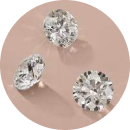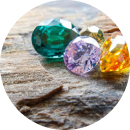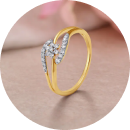
SAPPHIRE
Sapphire is a magnificent gemstone prized for both its astounding beauty and outstanding toughness. The fact that sapphires come in a variety of colors makes them one of the most adaptable jewels in the world, despite the fact that they are most frequently associated with a deep blue hue.
The traditional blue sapphire is praised for its rich, brilliant blue color, which is suggestive of the vast, peaceful oceans. This blue type is frequently linked to traits like loyalty, understanding, and dignity. Because it represents sincerity and enduring love, it has been prized for ages and is usually used in engagement rings.
However, sapphires are not only blue in color. They come in a variety of hues, including pink, yellow, green, and orange, as well as uncommon and highly sought-after hues like padparadscha (a delicate pink-orange hue) and color-changing sapphires that change hue depending on the lighting. The crystal structure contains a variety of trace elements, which interact with light to produce the astonishing color diversity.
On the Mohs scale of mineral hardness, sapphires come in right behind diamonds and are appreciated for their extraordinary hardness. Sapphires have a hardness grade of 9, making them extremely resistant to blemishes and normal wear and tear. This makes them a fantastic choice for various forms of jewelry, including engagement rings and heirloom pieces that may be passed down through the years.
Sapphires are a symbol of strength and resiliency because of their beauty and durability. They are thought to bestow protection and luck on their users in many cultures. Sapphires have been featured in celebrity jewelry, royal crowns, and gem collectors' collections, further solidifying their position as one of the most prized and classic gems in existence.
Whether you are drawn to the serene blue of a classic sapphire or the enchanting allure of a rare padparadscha, sapphires continue to captivate and inspire with their rich history, stunning colors, and enduring elegance.





